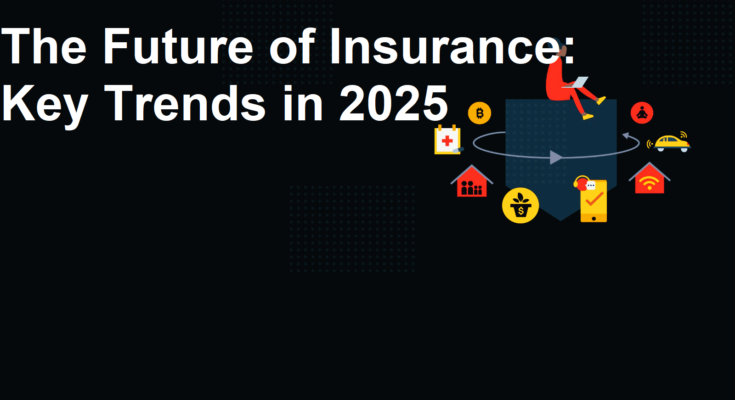In 2025, the coverage industry is predicted to be formed by several rising developments and technological improvements. Here are some key capabilities that would outline insurance in 2025:
1. AI-Driven Underwriting and Claims Processing
Automation: Artificial Intelligence (AI) will in addition automate underwriting and claims processing, improving performance and lowering manual intervention. AI will examine considerable datasets to assess dangers extra appropriately and expedite declare settlements.
Fraud Detection: Machine mastering algorithms will retain to beautify fraud detection competencies, identifying suspicious claims in real-time and reducing fraudulent sports.
2. Personalized Insurance Plans
Behavior-Based Premiums: Usage-based and behavior-based totally insurance (e.G., pay-as-you-pressure automobile insurance or medical insurance influenced by way of health monitoring facts) will continue to grow. Insurers will use facts from wearable devices, telematics, and IoT to provide extra customized, bendy pricing models.
Dynamic Policies: Policies that alter in real-time primarily based on changing consumer behaviors or external factors (along with climate or traffic) can also grow to be extra not unusual, providing greater adaptability.
3. Blockchain for Transparency and Efficiency
Smart Contracts: Blockchain may be used to automate policy contracts thru clever contracts, ensuring transparency, reducing office work, and dashing up claim processing.
Data Integrity: Blockchain’s immutable ledger might be precious for securing sensitive records, shielding policyholders’ records, and ensuring the accuracy of declare histories.
4. On-Demand Insurance
Micro-insurance: Consumers can have more get entry to to on-call for insurance for specific wishes, which includes insurance for brief durations, precise events, or single objects (e.G., insuring a camera for a weekend experience).
Embedded Insurance: Insurance coverage will be bundled seamlessly into products and services, along with tour coverage being automatically blanketed when reserving a flight.
5. Health Tech Integration
Wearable Devices and Health Monitoring: Health insurers will increasingly more rely upon information from wearables and fitness tracking gadgets to offer customized charges based on actual-time health statistics like coronary heart rate, hobby tiers, and sleep styles.
Telemedicine Insurance: With the continuing rise of telemedicine, insurers may additionally offer extra insurance for virtual healthcare services, including intellectual health aid and far off diagnostics.
6. Climate and Disaster Risk Management
Parametric Insurance: Parametric coverage can be greater common for natural disasters and climate-related occasions. Payouts will be caused mechanically based on predefined parameters (e.G., earthquake importance, storm wind speeds) in preference to looking ahead to a claims assessment.
Sustainability Incentives: Insurance vendors can also provide incentives for organizations and people that undertake sustainable practices, including installing renewable energy structures or using electric powered vehicles.
7. Customer-Centric Digital Platforms
Self-Service Platforms: Insurers will provide more user-pleasant virtual structures where customers can control guidelines, report claims, and receive real-time support thru chatbots and digital assistants.
Omnichannel Experience: An included experience throughout mobile apps, net structures, and bodily branches will allow clients to engage with insurers seamlessly across distinct touchpoints.
8. Cyber Insurance Expansion
Comprehensive Cyber Coverage: As cyberattacks continue to increase, cyber coverage will evolve to cowl a broader range of risks, which includes ransomware, statistics breaches, and commercial enterprise interruption because of cyber incidents.
Risk Prevention Services: Insurers might also offer cybersecurity tools and monitoring services to assist clients reduce their cyber threat publicity, including value past just economic safety.
9. Sustainability and ESG (Environmental, Social, Governance)
ESG Policies: Insurers will increasingly contain ESG standards of their business models, presenting products that guide environmental sustainability and socially responsible practices.
Green Insurance Products: There will probably be more coverage merchandise designed for renewable electricity projects, green buildings, and weather hazard mitigation.
10. Regulatory Changes and Data Privacy
Increased Data Protection: With the developing use of personal facts from IoT gadgets and digital platforms, stricter rules surrounding information privacy and protection (including GDPR) will preserve to impact the coverage zone.
Global Harmonization: Regulatory our bodies across regions may work towards harmonizing requirements to make cross-border coverage simpler, especially in the context of world digital agencies.
These features constitute how the insurance landscape in 2025 might be significantly shaped by using technology, consumer preferences, and international demanding situations like weather alternate and cyber risks.


